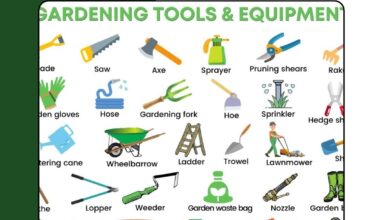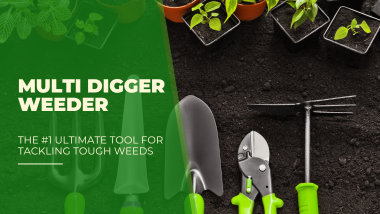Maintaining a beautiful lawn is a source of pride for many homeowners. But when you fire up your lawnmower only to discover that it’s not cutting properly, frustration quickly sets in.
Why is my lawnmower not cutting? This question plagues countless individuals, especially during the peak growing season. Understanding the reasons behind this issue and knowing how to fix them can save you time, money, and effort.

Let’s explore the top reasons your lawnmower might not be cutting effectively and provide easy fixes to get your mower back in tip-top shape.
1. Dull or Damaged Blades

One of the most common reasons why your lawnmower is not cutting is dull or damaged blades. Over time, blades can become worn down, chip, or even rust, leading to a less effective cut.
Dull blades can tear the grass instead of making a clean cut, which can stress your lawn and make it more susceptible to diseases.
Easy Fix:
To rectify this issue, sharpen the blades at least once a season or more frequently if you mow frequently or tackle tough grass. Here’s how:
- Remove the Blade: Disconnect the spark plug and safely lift your mower to access the blades.
- Sharpen the Blade: Use a sharpening stone or metal file to sharpen the edges. If the blade is significantly damaged, consider replacing it.
- Reattach the Blade: Make sure it’s securely fastened before returning the mower to the ground.
Regular maintenance of your mower blades will keep your lawn looking pristine and healthy.
2. Clogged Mower Deck

Another reason you might be asking yourself, “Why is my lawnmower not cutting?” is a clogged mower deck. Grass clippings and debris can accumulate underneath the mower, obstructing the blades and reducing cutting efficiency.
This can lead to uneven cutting and may cause your mower to work harder than necessary, leading to further issues down the line.
Quick Tip:
Cleaning the mower deck is straightforward. Here’s how to do it:
- Turn Off the Mower: Always ensure your mower is turned off and cooled down before cleaning.
- Lift the Mower: Use a jack or block to lift the mower safely.
- Scrape Away Debris: Use a putty knife or similar tool to scrape off clippings and debris from the underside of the mower.
- Wash the Deck: Rinse with water to remove any stubborn clogs, ensuring that it’s completely dry before using the mower again.
Regularly cleaning your mower deck after each use will help maintain its performance and prolong its lifespan.
3. Incorrect Mower Height Settings
Many people overlook the height settings of their mower blades, leading to the question, “Why is my lawnmower not cutting?” Setting your mower too low or too high can adversely affect its cutting capability.
If the blades are set too low, the mower may scalp the lawn, while a setting that’s too high may not cut the grass evenly.
Fast Fix:
To adjust the cutting height:
- Locate the Height Adjustment Lever: This is usually found near the wheels.
- Adjust to the Appropriate Height: For most grass types, a height of 2.5 to 4 inches is ideal. Adjust accordingly based on your grass type.
- Test the Cut: After adjusting, mow a small area to ensure you’re getting the desired cut.
Regularly checking and adjusting your mower’s height settings based on your lawn’s condition will ensure a beautiful, healthy yard.
4. Dirty or Blocked Air Filter
If you’re still wondering, “Why is my lawnmower not cutting?” it could be due to a dirty or blocked air filter. A clean air filter ensures that the engine runs smoothly. If the air filter is clogged, it can restrict airflow, leading to a lack of power and poor cutting performance.
Easy Fix:
To clean or replace the air filter:
- Access the Air Filter: Open the air filter cover, which is usually located on the side or top of the engine.
- Inspect the Filter: If it’s dirty or clogged, clean it with soap and water, or replace it if it’s excessively dirty.
- Reattach the Cover: Make sure everything is secure before starting your mower.
Cleaning or replacing the air filter regularly will keep your mower running efficiently and effectively.
5. Worn or Faulty Drive Belt

A less visible but critical component of your lawnmower is the drive belt. If your mower is not cutting properly, a worn or faulty drive belt could be the culprit.
This belt connects the engine to the blades, allowing them to spin. If it’s damaged, the blades won’t rotate as they should, leading to a poor cut.
Easy Fix:
To inspect and replace the drive belt:
- Remove the Mower Deck: Follow your mower’s manual for instructions on safely removing the deck.
- Inspect the Drive Belt: Check for fraying, cracking, or signs of wear.
- Replace if Necessary: If the belt shows signs of damage, replace it with a new one.
- Reassemble the Mower: Make sure everything is put back together properly.
Regularly checking your drive belt will help you catch issues before they affect your mower’s performance.
6. Overgrown Grass
Sometimes, the issue isn’t with the mower at all but with the grass itself. If your lawn has become overgrown, your mower may struggle to cut through the thick blades of grass. This can lead to clumps of grass being left behind and an uneven cut.
Easy Fix:
To handle overgrown grass:
- Mow in Stages: Consider mowing the lawn in stages, gradually lowering the cutting height. Start at a higher setting and then lower it for the second pass.
- Raise the Mower Deck: For extremely overgrown lawns, raise the mower deck to prevent scalping.
By adapting your mowing technique, you can effectively tackle overgrown grass and ensure a more even cut.
7. Low Engine Power or Fuel Issues
If you find yourself asking, “Why is my lawnmower not cutting?” it could be due to low engine power or fuel problems. If your mower’s engine isn’t running efficiently, it may not provide enough power to the blades, affecting their cutting ability.
Handy Solution:
To troubleshoot engine power issues:
- Check Fuel Quality: Ensure that you’re using fresh fuel. Old or contaminated fuel can lead to engine problems. If your fuel has been sitting for more than 30 days, replace it.
- Inspect the Spark Plug: A dirty or faulty spark plug can impact engine performance. Clean or replace it if necessary.
- Examine Fuel Lines: Look for any blockages or leaks in the fuel lines.
By maintaining your engine and ensuring proper fuel quality, you’ll keep your mower running smoothly. For DIY Lawn Mower Maintenance Guide, click here
Conclusion
When faced with the frustrating question of “Why is my lawnmower not cutting?” understanding the potential causes can help you quickly identify and fix the problem.
Regular maintenance, including checking blades, cleaning the mower deck, adjusting height settings, and inspecting filters and belts, will keep your lawnmower in optimal working condition.
Investing a little time in troubleshooting and maintenance can significantly improve your mowing experience, leading to a healthier and more beautiful lawn. So next time your mower struggles to cut, remember these tips to get it back on track. Happy mowing!
Don’t let lawn maintenance stress you out! Explore our comprehensive guide on lawnmowers to discover expert tips, maintenance hacks, and product recommendations that will keep your mower running smoothly.






